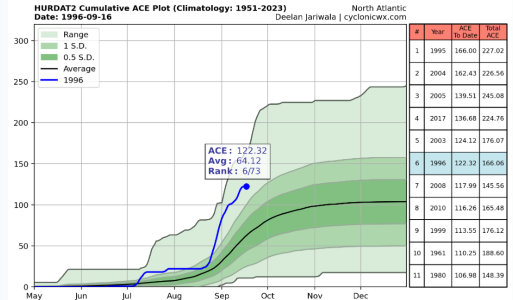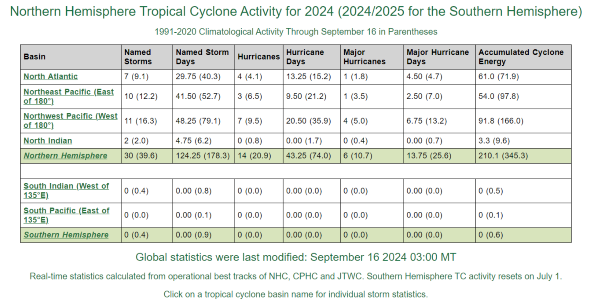tolakram wrote:What I find interesting about this year is that the models seem fooled by the conditions, as if there's a parameter that is important that is not being tracked. A model will show development, then back off as current conditions get updated and they do not match what the model forecast. I'm not sure this is actually happening as it's just a casual observation. I do seem to remember this from 2013 as well, but it's been a while.
Record warm ocean temps, an environment good enough to spin up a major in July, and then something changed.
I do not buy any connection to either Tonga or Solar activity. It's just a convenient social media excuse right now until properly researched. IMO

On the contrary, I'd argue that models have been showing less phantom storms this year than they typically do. About 2 weeks ago, someone posted a single GFS run valid in early September 2022 that showed 4 TCs, apparently as an argument for how "favorable" the background state in 2022 was (compared to this year when models were showing nothing in that period). Of course, the only system of the 4 that actually formed was Earl.
If anything, false negatives seem like a bigger issue for models this year than false positives. Francine's eventual genesis in the BoC was poorly forecast by all operational models except ICON. TD 7's genesis was also totally out of the expectations of GFS even in the short term.
Yes, both were the main ones that were falsely hyped by several models (deterministic or ensemble) to be MDR hurricanes, but those were also around 10 days out. And even then, the point is that I do suspect two is still a lot fewer than what models would have shown in other years with similar conditions, with 2022 being a prime example. That also happens even in less hostile years: Peter 2021, Philippe 2023, and so on.
Whether things will become more favorable later is anyone's guess, but even if they do, I have little faith in us knowing in advance because of the false negatives.


























